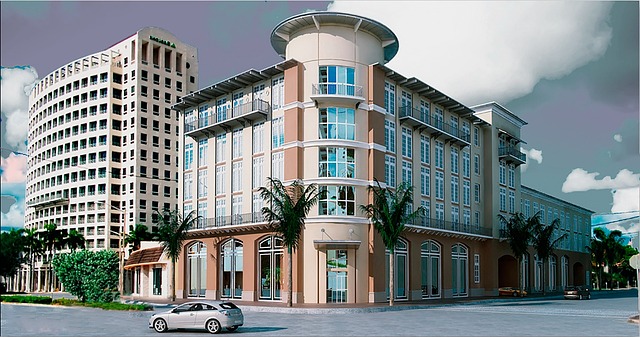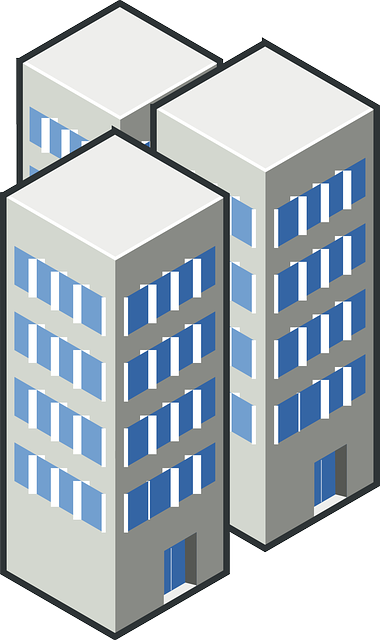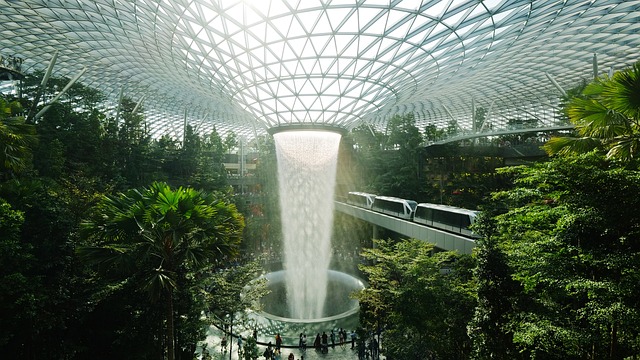Real estate success hinges on understanding diverse business needs: tech startups favor open plans, law firms require privacy, retail spaces optimize customer flow, and industrial facilities need ample storage. Strategic location and tailored design in retail drive foot traffic. Industrial real estate's surge in e-commerce demand highlights its vital role in global supply chains, with prime locations near transportation hubs enhancing efficiency.
In today’s dynamic market, understanding the unique requirements of office, retail, and industrial real estate is paramount for investors and tenants alike. This article guides you through the intricate nuances of each sector, from optimizing office space layouts to unlocking the potential of strategic retail locations and delving into the critical storage and logistics considerations in industrial properties. By exploring these key aspects, we empower readers to make informed decisions in their real estate ventures.
Understanding Office Space Requirements

Understanding office space requirements is paramount in the real estate sector, where efficient design and layout can significantly impact productivity and employee satisfaction. The needs of a business vary greatly depending on its nature, size, and industry. For instance, tech startups may require open-plan spaces to encourage collaboration, while traditional law firms might opt for private offices to maintain confidentiality.
Retail and industrial buildings also have distinct demands. Retail spaces need to be strategically designed to guide customer traffic and enhance the shopping experience, often incorporating display areas and sales counters. Industrial facilities, on the other hand, require ample storage, loading docks, and specialized equipment to facilitate manufacturing or logistics operations. Real estate professionals must carefully consider these unique requirements to create functional, adaptable, and appealing workspaces that cater to the specific needs of each business.
Retail Properties: Location and Design Matters

The success of a retail property largely hinges on its location and design in the competitive real estate market. Prime retail spaces, often found in bustling city centers or high-traffic areas, attract a steady stream of customers. These locations benefit from high visibility, convenient accessibility, and a vibrant environment that encourages browsing and spontaneous purchases.
When designing retail properties, understanding the target demographic is key. The layout should facilitate easy navigation, with well-placed storefronts, ample signage, and strategic placement of products or displays. A visually appealing exterior, along with an inviting interior, can create a positive customer experience, encouraging repeat visits. Effective real estate strategies in retail involve creating a unique shopping atmosphere that sets the property apart from competitors while catering to the specific needs and preferences of its intended clientele.
Industrial Real Estate: Storage and Logistics Insights

Industrial real estate plays a pivotal role in the global supply chain, housing a diverse range of businesses from manufacturing plants to distribution centers. The demand for such spaces is driven by e-commerce’s surge, as online retailers require robust logistics networks to fulfill customer orders efficiently. This has led to an increase in warehousing and last-mile delivery operations, further emphasizing the need for strategic industrial real estate investments.
These properties offer unique advantages like high ceiling heights, ample loading docks, and wide interior spaces, ideal for storing bulk goods or facilitating complex logistics operations. Location is key; proximity to transportation hubs, major highways, or rail lines can significantly enhance a facility’s value and efficiency. Understanding these factors is crucial for investors and businesses navigating the dynamic landscape of industrial real estate, ensuring they secure optimal spaces that cater to modern supply chain demands.






